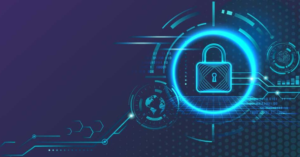Protecting sensitive information access is crucial in this era of digital change. Because cyber dangers are always changing, using passwords alone is no longer adequate. An extra layer of protection is offered by Multi-Factor Authentication (MFA), which makes it far more difficult for unauthorized users to obtain access.
Understanding Multi-Factor Authentication (MFA)
In order to access an application, online account, or other digital resources, users must give two or more verification factors, which is known as multi-factor authentication (MFA). MFA’s main goal is to increase security by integrating several authentication techniques, which generally fall into three categories:
- Something You Know: Typically, this is a PIN or password.
- Something You Have: This may be a cell phone, smart card, or tangible token.
- Something You Are: This includes iris scans, fingerprints, and face recognition among other biometric verification techniques.
Even if one factor like a password is compromised, MFA lessens the chance of unwanted access by requiring a combination of these elements.
Why MFA is Crucial
- Enhanced Security: By demanding several forms of authentication, MFA dramatically lowers the danger of unwanted access.
- Compliance: MFA is necessary for a number of regulatory frameworks and standards, including GDPR, HIPAA, and PCI-DSS, for specific kinds of data access.
- Protection against phishing: The extra MFA levels can keep the attacker from accessing the account even if a user falls prey to a phishing attack and divulges their password.
- Reduced Risk of identity: Multi-factor authentication makes it harder for hackers to pose as trustworthy users.
Steps to Implement Multi-Factor Authentication
1.Assess Your Needs and Goals: It’s critical to evaluate the unique demands and objectives of your business before putting MFA into practice. Think about the following:
- Regulatory Requirements: Determine whatever laws or regulations call for MFA.
- Risk Assessment: To determine which data and systems are most at risk and would benefit most from MFA, do a comprehensive risk assessment.
- User Impact: Try to strike a balance between security and usability when considering how MFA will affect the user experience.
2.Choose the Right MFA Methods: Choosing the right MFA techniques is essential for user acceptability as well as security. Typical MFA techniques include of:
- One-time passwords (OTPs) based on SMS: A code provided over SMS to the user’s mobile device.
- Authenticator apps: Time-based OTPs are generated by apps such as Authy and Google Authenticator.
- Biometric Authentication: Biometric authentication uses iris scans, fingerprints, or face recognition.
- Hardware Tokens: Hardware tokens are actual objects that employ near-field communication (NFC) or produce OTPs.
- Email-Based OTPs: An email code that is delivered to the user’s address on file.
3.Integrate MFA with Existing Systems: When deploying MFA, integration is sometimes the most difficult component. Make sure it works with the identity management systems, apps, and systems you already have. Think about doing these actions:
- Identify Integration Points: Ascertain the locations of the MFA implementation (internal apps, email systems, VPNs, etc.).
- Use Single Sign-On (SSO): By combining MFA with SSO, users may log in only once and access several services, simplifying the user experience.
- APIs and SDKs: Use the software development kits (SDKs) and APIs offered by MFA suppliers to integrate bespoke applications seamlessly.
4. Develop a Rollout Plan: A carefully considered rollout strategy is essential to an implementation’s success. Add the following components:
- Pilot Testing: To test MFA in a controlled setting, begin with a pilot program. After gathering feedback, make any required modifications.
- User Education and Training: To guarantee a seamless transition, inform users of the significance of MFA and how it operates. You should also give training resources.
- Communication Plan: Clearly explain the advantages, timetable for implementation, and user support resources.
5.Monitor and Optimize:After MFA is put into place, security and usability must be maintained by ongoing monitoring and optimization:
- Monitor Usage and Performance: Keep an eye on these metrics to see any problems or potential areas for development.
- User Feedback: Gather user input on a regular basis to learn about their experiences and resolve any issues.
- Regular Audits: To make sure MFA is working properly and to spot any weaknesses, do regular security audits.
- Update and Adapt: Keep up with emerging risks and new MFA technologies, and make necessary updates to your MFA setup.
Overcoming Challenges
MFA implementation can come with a number of difficulties, however they can be addressed with proper preparation and execution:
- User Resistance: Because MFA is viewed as inconvenient, some users may oppose it. Take care of this by outlining the advantages and offering sufficient instruction.
- Technical Integration: There may be incompatibilities with current systems. Collaborate closely with MFA providers and your IT staff to guarantee a seamless integration.
- Cost: MFA products might be very priced. Think about the long-term financial savings from fewer security incidents and possible fines from the authorities.
Conclusion
In an era where cyberattacks are ever more complex, multi-factor authentication is an essential part of a strong security plan. various factor authentication (MFA) greatly improves security, safeguards sensitive data, and guarantees regulatory compliance by demanding various forms of verification. Careful planning, the selection of suitable techniques, smooth integration, and ongoing monitoring are necessary for the successful implementation of MFA. Organizations may successfully adopt MFA and protect their digital assets against unwanted access by adhering to these guidelines and best practices.



